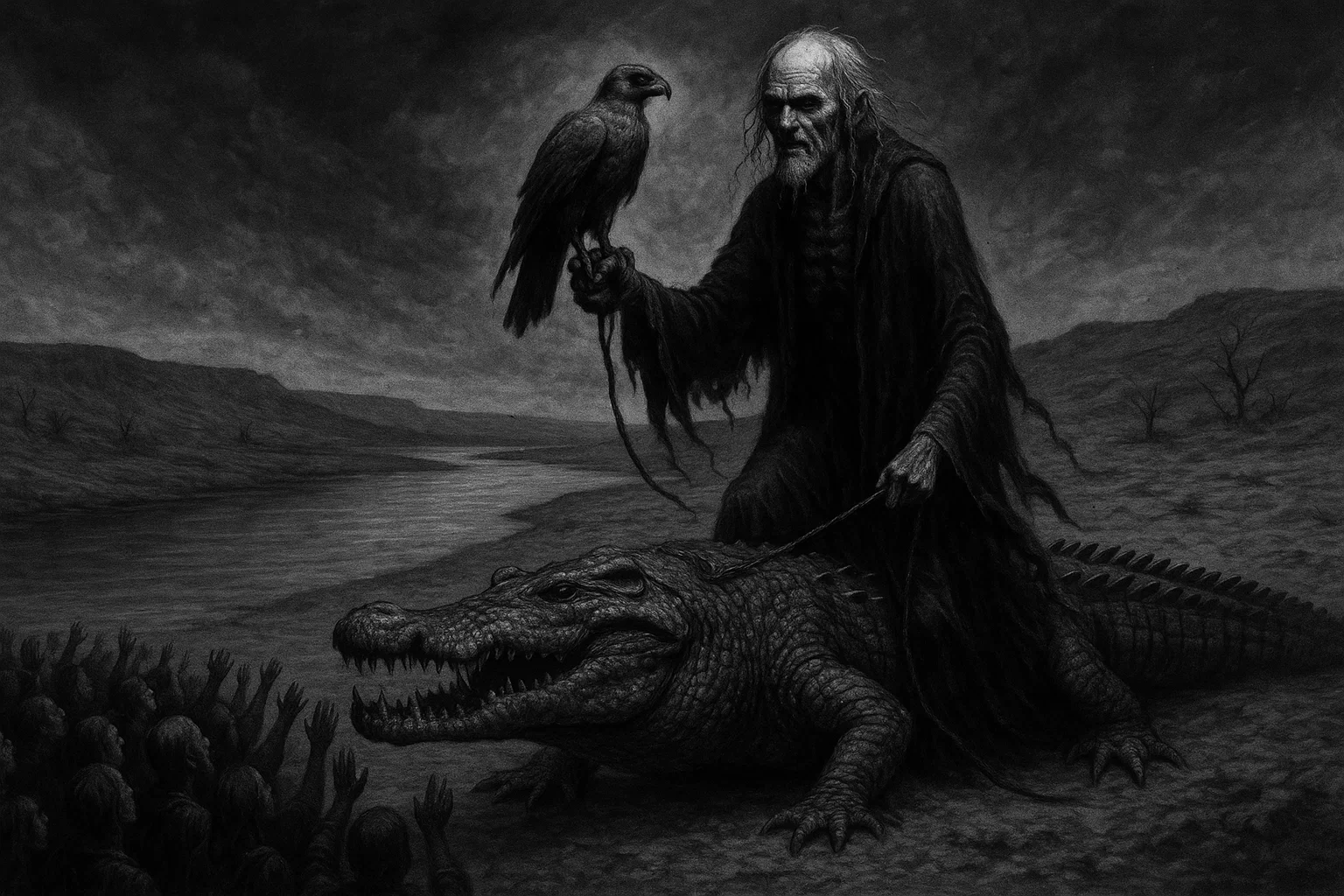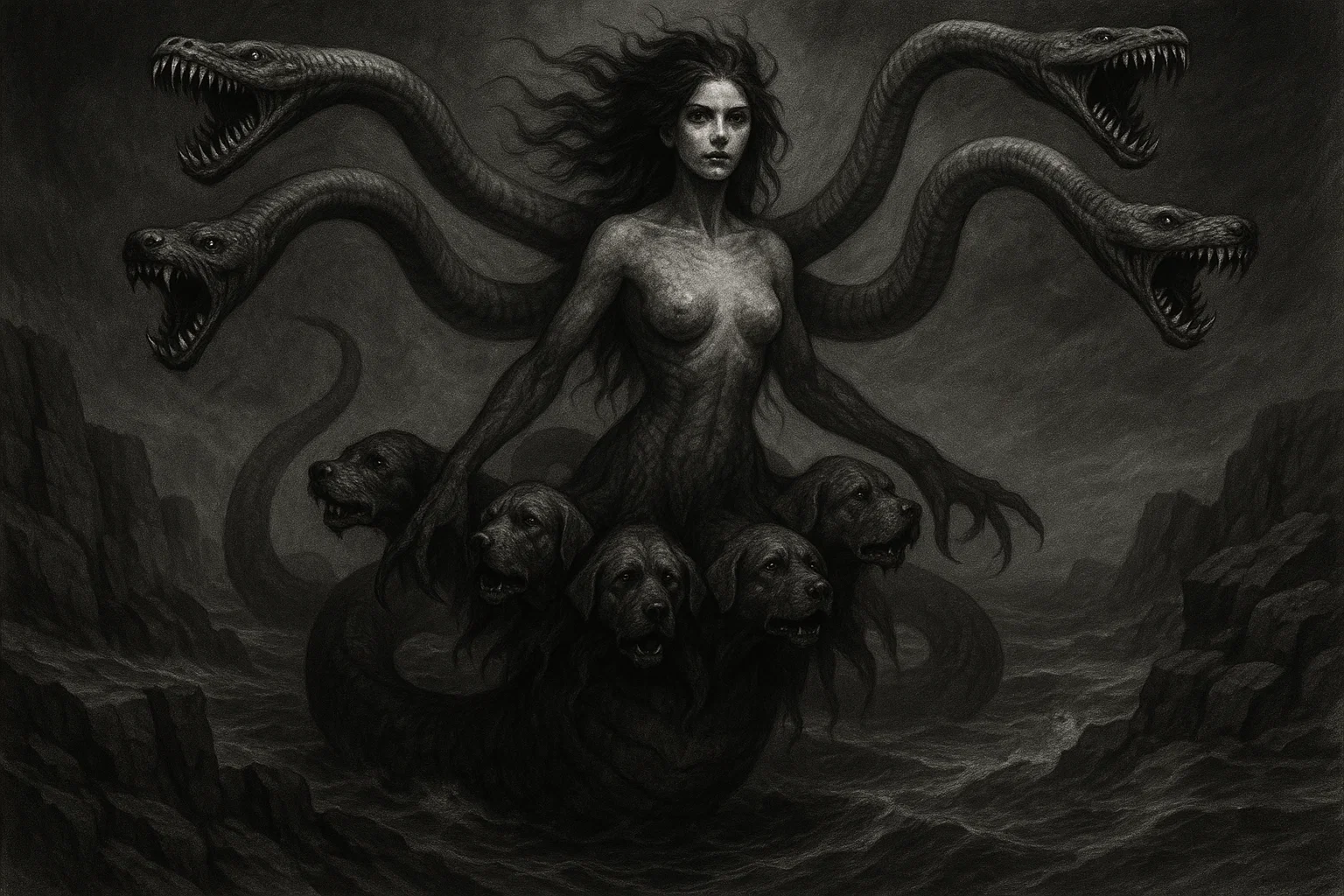Did you know Agares, a powerful Duke of Hell, can teach you any language or shake the earth beneath your feet? Known for his striking appearance—an old man riding a crocodile with a hawk on his fist—Agares is a fascinating figure in demonology.
As the second demon in the Ars Goetia, this fallen angel commands 31 legions and holds sway over the eastern region of Hell. In this article, we dive into Agares’ origins, powers, and role in occult lore to answer the question: Who is Agares?
Summary
Key Information About Agares
| Attribute | Details |
|---|---|
| Name | Agares (Agreas, Agrat, Agar) |
| Titles | Duke of Hell |
| Appearance | Old man riding a crocodile, carrying a goshawk |
| Pantheon | Goetic Demonology |
| Equipment/Tools | Rides a crocodile, carries a goshawk, sometimes depicted with a staff |
| Associated Gem | Carnelian, Hematite |
| Associated Color | Red, Gold, Green |
| Astrological Influence | Aries (March–April), Mars |
| Equivalents | Possible link to Agreus (Greek mythology) |
| Alignment | Chaotic Neutral |
| Opposing Angel/Saint | Archangel Michael, Saint Jerome |
What Is the Meaning of Agares’ Name?
The name Agares, pronounced “AH-gar-es,” is a linguistic puzzle that reveals much about his essence. Its roots span multiple cultures, each contributing to the demon’s identity.
In Greek, “agros” translates to “field” or “land,” possibly linking Agares to his dominion over Hell’s eastern region—a territory he governs with authority.
This connection is reinforced by the Latin “ager,” meaning “field,” which echoes medieval notions of land as a symbol of power. Agares’ ability to cause earthquakes further ties his name to the earth, suggesting a mastery over physical and symbolic landscapes.
Another layer emerges from Hebrew, where “agar” means “to gather” or “collect.” This could reflect Agares’ remarkable power to teach all languages, gathering knowledge for those who summon him, or his ability to retrieve fugitives, collecting those who flee.
You May Also Like: The Lobizon Legend: Werewolf, Curse, or Cryptid?
The name also bears a faint resemblance to “Agreus,” a hunter in Greek mythology associated with Artemis, whose companion might parallel Agares’ goshawk—a bird of prey symbolizing focus and pursuit.
Some esoteric scholars speculate a link to “Agrat,” from Agrat bat Mahlat, a Jewish demoness, though her seductive traits contrast with Agares’ intellectual and martial focus.
Phonetically, Agares carries an aggressive undertone, hinting at his capacity to destroy dignities and unleash chaos. This aligns with his chaotic neutral alignment, balancing creation and destruction.
Medieval scribes likely adapted his name from oral traditions, blending Semitic, Greco-Roman, and Christian influences into a title that encapsulates his roles as a scholar, ruler, and disruptor.
Agares Historical and Mythological Background
Agares’ story begins in the celestial realm. According to the Pseudomonarchia Daemonum, he was once part of the Order of Virtues, an angelic choir known for miracles and divine strength.
When Lucifer rebelled, Agares joined the fallen, plummeting from grace to become a Duke of Hell. This fall transformed him into a ruler of the eastern region, a position of power in Hell’s infernal geography. His angelic origins linger in his intellectual gifts, such as teaching languages, while his infernal nature manifests in his destructive abilities.
Beyond Christian demonology, Agares’ attributes suggest echoes of older mythologies. His crocodile mount recalls deities like Sobek, the Egyptian god of power, or Tiamat, the Babylonian chaos dragon.
These parallels hint at a syncretic evolution, where pre-Christian gods influenced medieval demonology. The goshawk, a symbol of vigilance, evokes falcon-headed Horus or the hunting prowess of Agreus, suggesting Agares absorbed traits from Near Eastern and Hellenistic traditions.
His elderly form and command over movement might even nod to trickster figures like Odin, though Agares’ infernal twist sets him apart.
In medieval Europe, Agares rose to prominence during the witch trials of the 15th to 17th centuries. Accused witches and magicians invoked him for escape or communication, leveraging his ability to retrieve fugitives and teach languages.
Grimoires like the Livre des Esperitz portray him as a scholarly yet perilous spirit, appealing to alchemists and political schemers alike. His eastern dominion aligns with medieval cosmology, where the East symbolized enlightenment and authority, positioning him alongside other directional rulers like Amaimon and Paimon.
What Does Agares Look Like?
Agares’ appearance is as memorable as it is symbolic. The Ars Goetia describes him as an elderly man, courteous in demeanor, riding a crocodile and carrying a goshawk on his fist. His aged face, often gaunt and pale, suggests wisdom or a deceptive calm, masking his destructive potential.
“The second Spirit is a Duke called Agares; he is under the power of the East, and cometh up in the form of an old fair Man, riding upon a Crocodile, carrying a Goshawk upon his fist, and yet mild in appearance.”
The crocodile, with its powerful jaws and serpentine tail, embodies stealth and primal force, while the goshawk, a bird of prey, signifies precision and control.
In the Dictionnaire Infernal, his crocodile is exaggeratedly fierce, and modern depictions, like in Shin Megami Tensei, add glowing eyes or a staff to enhance his mystique.
You May Also Like: The Edge of Nothing | Horror Story
Symbolically, the elderly form represents experience or hidden intent, the crocodile ties to his earthquake power, and the goshawk reflects his linguistic and pursuit abilities. This vivid imagery distinguishes Agares in demonology, blending age, nature, and authority into a striking figure.
Agares’ Powers and Abilities
Agares wields an impressive array of powers that make him both a benefactor and a threat. The Pseudomonarchia Daemonum details his capabilities, which include:
- Causing Earthquakes: He can shake the earth, disrupting physical and metaphorical foundations with devastating force.
- Controlling Movement: Agares compels the stationary to flee and retrieves runaways, exerting influence over space and will.
- Teaching Languages: He grants instant mastery of all tongues, from Latin to forgotten dialects, aiding scholars and spies.
- Destroying Dignities: He undermines authority, both spiritual and temporal, aligning with his chaotic nature.
- Inducing Dance: He triggers frenzied movement, possibly linked to ritual ecstasy or crowd manipulation.
- Enhancing Charisma: He boosts persuasion, making him a valuable ally in diplomacy or deception.
These abilities position Agares as a demon of intellect and upheaval, capable of aiding summoners with knowledge or toppling their enemies with chaos.
Agares’ Role in the Hierarchy of Hell
As a Duke of Hell, Agares commands 31 legions, a significant force within Hell’s structure. He governs the eastern region, a role that complements other directional rulers like Amaimon (South) and Paimon (West).
Under Lucifer’s supreme command, he may also serve Satanachia, forming alliances with demons like Amon and Barbatos. His mild demeanor contrasts with more volatile figures like Andras, making him a strategic choice for summoners seeking intellect over raw destruction.
This balance defines his place in Hell’s complex hierarchy.
What Is Agares’ Zodiac Sign?
Agares is tied to Aries (March 21–April 19), a fire sign ruled by Mars. This alignment reflects his assertive, disruptive traits—leadership, courage, and impulsiveness mirroring his command and earthquake powers.
His influence peaks in spring, a season of renewal that amplifies his abilities to enact change. Mars enhances his martial nature, while a secondary Mercury connection, suggested by some occultists, ties to his language mastery, though Mars remains dominant.
How to Summon the Demon Agares?
Summoning Agares requires precision and respect, as outlined in the Ars Goetia. Practitioners draw his sigil in red or gold ink, prepare offerings like frankincense or red candles, and create a protective circle of salt or chalk.
You May Also Like: Nancy Mountain Ghost: Haunted by a Grieving Mother? Here’s Her Story
Invocations, often in Latin, call him forth, demanding focus to avoid his deceptive tricks. Historically, scholars sought his linguistic gifts, while fugitives relied on his retrieval powers.
Modern occultists might use his sigil in meditation, though ethical concerns temper practical summoning.
Agares Sigil
Agares’ sigil, a star-like design with radiating lines, channels his energy in Goetic magic. Drawn in red or gold, it symbolizes his authority and movement, serving as a ritual focal point. Its intricate pattern reflects his powers, bridging the summoner to his infernal realm with precision and reverence.
Agares in Modern Media and Pop Culture
Agares appears in niche media, notably video games like Shin Megami Tensei, where he wields earth-based attacks, and Castlevania: Aria of Sorrow, as a movement-focused soul.
The Black Pullet references him as a knowledge-granting spirit, influencing occult fiction. In chaos magic, he’s invoked for versatility, though he remains less mainstream than Paimon or Bael, retaining an air of esoteric intrigue.
Comparison of Agares with Other Demons
| Demon Name | Key Powers | Hierarchy Rank | Opposing Angel |
|---|---|---|---|
| Paimon | Teaches arts/sciences, grants visions | King | Archangel Raphael |
| Vassago | Reveals past/future, good-natured | Prince | Archangel Gabriel |
| Barbatos | Understands animal voices, finds treasures | Duke | Archangel Uriel |
| Amon | Procures feuds, tells past/future | Marquis | Archangel Michael |
| Samigina | Teaches sciences, raises souls | Marquis | Archangel Haniel |
Conclusion
Agares, the Duke of Hell, merges intellect and chaos in a unique package. His crocodile-riding form, eastern rule, and language mastery cement his place in Goetic lore. From ancient texts to modern games, his legacy intrigues and inspires.







